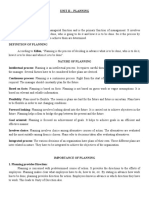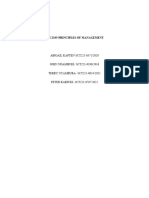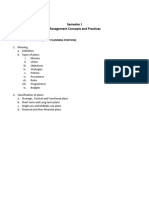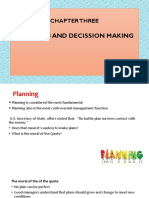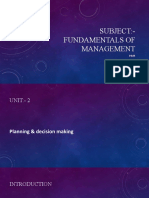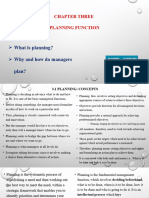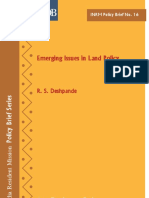0% found this document useful (0 votes)
21 views7 pagesPLANNING
The document outlines the concept of planning in management, emphasizing its importance in achieving organizational goals through strategic, tactical, and operational plans. It details the steps in the planning process, including assessing current conditions, establishing objectives, and implementing plans, while also discussing limitations that can lead to planning failures. Additionally, it includes review questions and exercises to reinforce understanding of the material presented.
Uploaded by
shingiraichikashaCopyright
© © All Rights Reserved
We take content rights seriously. If you suspect this is your content, claim it here.
Available Formats
Download as DOC, PDF, TXT or read online on Scribd
0% found this document useful (0 votes)
21 views7 pagesPLANNING
The document outlines the concept of planning in management, emphasizing its importance in achieving organizational goals through strategic, tactical, and operational plans. It details the steps in the planning process, including assessing current conditions, establishing objectives, and implementing plans, while also discussing limitations that can lead to planning failures. Additionally, it includes review questions and exercises to reinforce understanding of the material presented.
Uploaded by
shingiraichikashaCopyright
© © All Rights Reserved
We take content rights seriously. If you suspect this is your content, claim it here.
Available Formats
Download as DOC, PDF, TXT or read online on Scribd
/ 7








